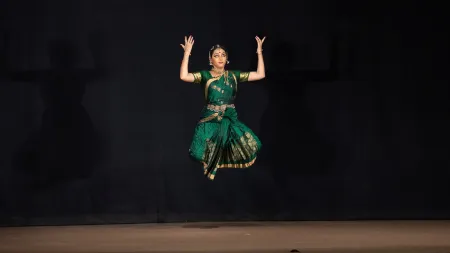- India
- International
Food historian Salma Yusuf Husain brings back recipes from Shah Jahan’s dastarkhwan
During her research, Husain also travelled across central Asia, including Tashkent, Bukhara and Samarkand, and discovered how noodles and pastas were also present in the Mughal kitchen.
 Food historian Salma Yusuf Husain. (Express Photo by Amit Mehra)
Food historian Salma Yusuf Husain. (Express Photo by Amit Mehra)
When Mughal emperor Aurangzeb deposed his father Shah Jahan and imprisoned him, legend has it that he allowed him only one ingredient of his choice for the rest of his life. And Shah Jahan chose chickpeas. “A great source of protein, chickpeas can be cooked in many different ways — in soups, chicken, pulao, dal or halwa — that’s how the emperor survived his last years,” says food historian Salma Yusuf Husain. “But when Shah Jahan was the ruler, his dastarkhwan was a riot of colours and flavours. Paneer used to be of seven different colours, so was kofta and pulao. For instance, they used to cook half the rice in fresh pomegranate juice and the other half in water. These two varieties were later mixed and coated with silver warakh. This was for the Yakuti pulao; yakut means ruby in Persian,” she adds.
Recipes of such colourful and flavour-rich dishes make The Mughal Feast (Roli Books, Rs 1,495), which is a transcreation of Nuskha-e-Shahjahani, a Persian recipe book dating back to Shah Jahan’s rule. Divided into eight chapters, it has recipes for an assortment of naans, aash (soups), qaliyas and do-piyazahs, bharta, zeer biryani, kababs and other sweetmeats. “Unfortunately, the last chapter of the manuscript — on murabbas and pickles — is missing; we tried hard but couldn’t find it,” says Husain.
Recipes for pulao make the longest chapter, with over 50 varieties. If for Naranj pulao, orange-flavoured lamb curry is cooked in rice, for Zard pulao, sweetened cinnamon-flavoured rice is garnished with fried raisins. In Koko pulao, lamb koftas, do-piyazah stuffed-chicken and omelette are cooked with rice. “The cooks in the royal kitchen were competitive and creative. You’ll find a lot of nuts and dry fruits in their dishes, that is what they got from central Asia. In India, they found vegetables, grains and fresh fruits. That’s how you can see dishes with ingredients such as falsa, banana, melon, mangoes and oranges,” says Husain, adding that the chefs were preparing hundreds of dishes each day, as one could not predict the emperor’s mood. “The food was cooked in the purest of rainwater combined with water from Yamuna and Chenab rivers that would be stored in the kitchens,” says Husain, who is a postgraduate in Persian language and literature. Her first job involved translating handwritten Persian manuscripts at the National Archives in 1964.
“One day, I was wondering about the legacy and heritage that the Mughals have left us with, but not much was written about their food, though Mughlai cuisine is popular even today. When there are so many books on Akbar, Jehangir and Shah Jahan, why hasn’t anyone written about their manuscripts on food?” she says. Sometime later, she found Alwan-e-Nemat, a collection of recipes written during Emperor Jehangir’s time, which made her award-winning book The Emperor’s Table (2008).
She found Nuskhe-e-Shahjahani in London’s British Library in early 2000s and translated only recipes for pulao for a book that was published by Rupa in 2004. Recently, when founder-publisher of Roli Books, Pramod Kapoor, went to London, he got a copy of the full manuscript. “Even in Ain-i-Akbari, there is a chapter dedicated to kitchen management, through which we get to know how important food was. The emperor had nobody less than the prime minister look after it. The Mir Bakawal consulted the hakims, who decided the menu according to the king’s temperament, sleeping pattern and what is good for the intellect,” she says.
The Mughals had a sweet tooth. “In Alwan-e-Nemat, it is written that they used to dip even the shami kababs in sugar syrup,” says Husain. On the spices they used, she adds, “There were no chillies, no garlic and no turmeric in their food, they had saffron, which was used not only for colouring but also as an integral ingredient, along with ginger, coriander seeds and cumin seeds. From ghee, they started cooking in olive oil and when they became Indianised, they started using mustard oil,” she says.

The Mughals also adapted the Indian dish of bharta — where vegetables are mashed after roasting over an open fire. “With each emperor, a new type of cooking was introduced. With Akbar came a lot of Indian dishes, Jehangir lived mostly in Kashmir, so cooking of the birds was introduced as he would hunt a lot near the Dal Lake,” she says, adding that the Portuguese got with them chillies, potatoes and tomatoes.
During her research, Husain also travelled across central Asia, including Tashkent, Bukhara and Samarkand, and discovered how noodles and pastas were also present in the Mughal kitchen. “We were staying in a homestay in Samarkand with an Afghani family, where we saw children rolling and cutting noodles and pasta. The lady of the house told us that these came to them through the silk route, before going to Italy,” says Husain, who has worked with ITC for over 20 years as a food consultant. She notes how the Mughlai cuisine served now is far from authentic. “Now if you ask for Mughlai food, they will give you a plate full of spices, sauces and oil, but that was only used to enhance the base flavours. I just don’t want to write the recipes, I want to know the history, how are we using the recipes and have we done justice to them or or ruined them,” says the author.
More Lifestyle
Apr 19: Latest News
- 01
- 02
- 03
- 04
- 05


































